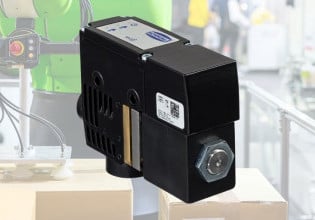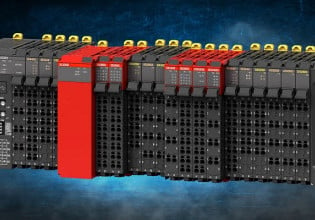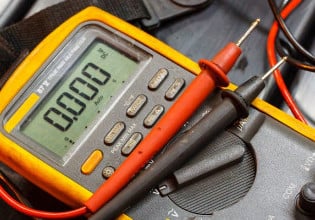Basic Concepts of Pneumatically Powered Air Motors
Air motors are common in process industries, mainly used in hazardous areas. This article introduces the features and working principles of air motors and the differences between air and electrical motors.
Air motors, also known as pneumatic motors, use compressed air to create rotational movement, which can be used for various purposes in place of electric motors. Compressed air of the required quantity (such as 4-6 bar, or roughly 60-90 psi, and sufficient flow rate) activates its internal mechanism to provide motor functionality.
Its internal structure and working principle are entirely different from conventional electric motors and provide some unique features and functions that conventional electric motors lack. In process industries, they are mainly used in applications where using electrical motors can become hazardous.
Air Motor Speed and Direction Control
With the proper pressure and flow control valves in place, air powered motors can provide both speed and directional control, just like electric motors.
Speed Control of Pneumatic Motors
Control of both speed and direction depends on how compressed air is supplied to the air motor.
The speed of the air motor is directly proportional to the flow of compressed air, assuming sufficient pressure is supplied. The higher the flow rate, the higher the air motor’s speed, and vice versa. By raising the flow rate with proper control valves, we can change the speed of the air motor.

Figure 1. Example of a rotary vane air motor. Image used courtesy of Grainger
Alternatively, raising the system pressure can raise the flow rate through properly sized air delivery components; therefore, the speed of the motor can be increased by raising pressure with variable regulator controls.
Air Motor Direction Control
The direction of the air motor depends on the connection of the supply and return ports of compressed air on the motor. The direction can be reversed by swapping the supply and return ports on the air motor. For example, if the air motor moves in a clockwise (CW) direction when the supply is connected at port A and the return supply at port B, its direction can be changed to a CCW direction by connecting the supply and return at port B and port A, respectively.
Air Motor Working Principle
Different types of internal mechanisms include vane, piston, and turbine motors. Each type has different operating parameters and application categories.
Vane Air Motor
Vane air motors are the most common type used in the process industry. It consists of a cylinder (a stator) and an enclosed rotor. The rotor is placed off-center, in an eccentric style, creating uneven space around the rotor. The vane-type structure divides the internal chamber into different areas of various sizes. These individual chambers, with uneven spacing between the rotor and stator, create a sealing mechanism.
The sealed chamber provides excellent conditions for exerting force by pneumatic air. The air passes from one chamber to another, creating a series of motions that result in continuous motor rotation in its respective direction.
Piston Air Motor
Piston air motors use multiple cylinders around a rotating shaft and can consist of up to 6 cylinders. Compressed air exerts a force on the cylinders, which rotates the shaft.
Piston air motors are capable of delivering high torque at low speeds.

Figure 2. Air motor, also known as pneumatic motor, assemblies can be designed with various form factors. Image used courtesy of Chicago Pneumatic
Turbine Air Motor
As the name implies, it uses a turbine wheel inside the motor. A rotor is attached to the turbine wheel, which consists of curved blades through which air passes. As the air passes, it turns the rotor, which rotates the motor.
These air motors are used in applications that require high speed with low torque.
Features of Air Motors
Air-powered motors offer some unique features above their electric competition.
Compact Size
Air motors are more compact than their counterpart electric motors. The coiled windings within electric motors consume more space and material (adding more weight) as compared to the rotating components inside an air motor. They can deliver the same amount of power within their compact size.
Stepless Control
An air motor’s various functionalities, such as speed and torque, can be controlled in a stepless manner, i.e., without any intermittent steps. These motors can be controlled with valves, which might be either manually or computer controlled.
If manually controlled, the speed is adjusted with purely analog devices. On the other hand, an electric motor driven by a VFD will be limited by the precision of the PWM output from the drive.

Figure 3. Air motors can be used in situations where electric power is unsafe or not available. Image used courtesy of Canva
Overload Resilience
Air motors can withstand overload conditions without significant damage to their internal components since air motors do not contain components that malfunction in overload conditions. Electric motors suffer damage to their windings, which will likely become heated in an overload condition.
Air motors don’t require overload protection. Even in the worst overload condition, the applied reverse force will simply stop the rotational motion without damaging the motor.
Suitable for Hazardous Environments
Hazardous conditions are common in every process industry and pose a significant danger from exposure to electrical components, including motors. These hazardous environments can include the presence of dust, powder, and organic solvent. When these hazardous particles come in contact with live electric current, they cause an explosion. Some electric motors are far more hazardous in such situations (such as DC motors, with brushes that arc during each rotation). Still, motors that operate with no risk of heat or spark are inherently safer.
Air motors do not use electrical current to operate and perform essential work safely within the confines of these hazardous locations. Their metallic structure also provides excellent resistance to corrosion and withstands heavy vibration.
Air Powered Motors
Although less common than electric motors, these devices can still be found quite frequently when electrical power is hazardous or simply unavailable. The application of a pressurized air system can provide excellent speed and direction control while supplying motion in a smaller form factor than electrical devices.






